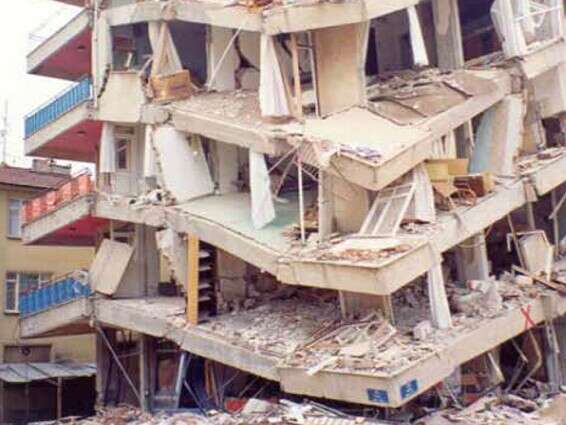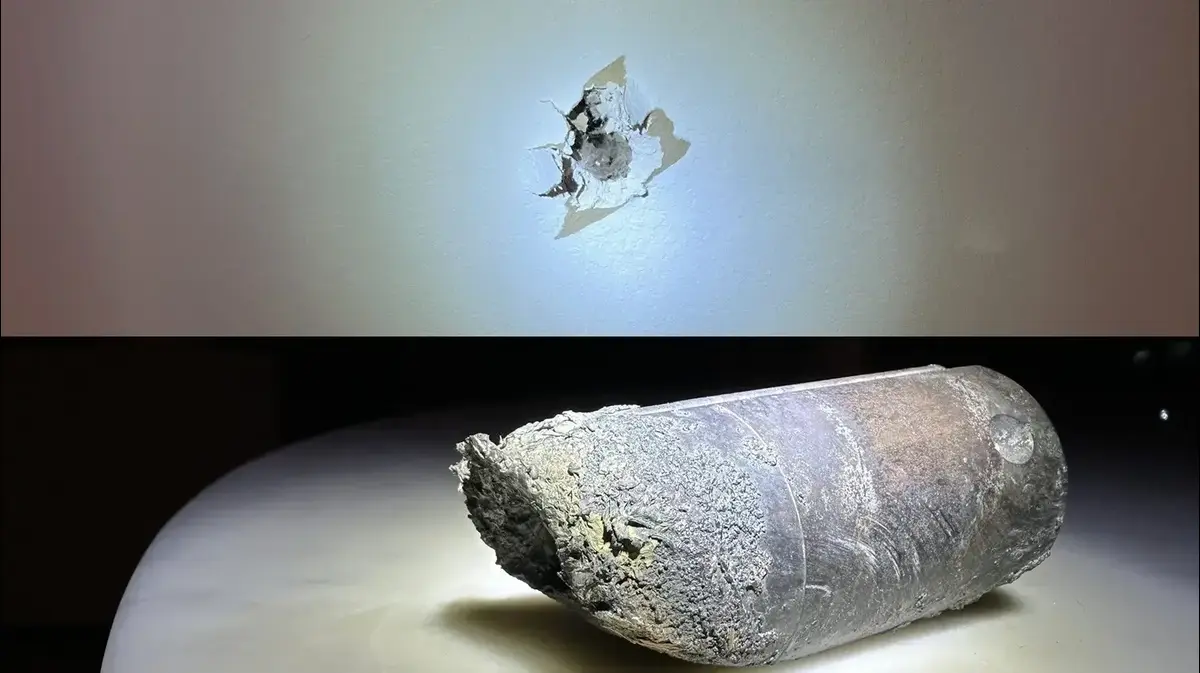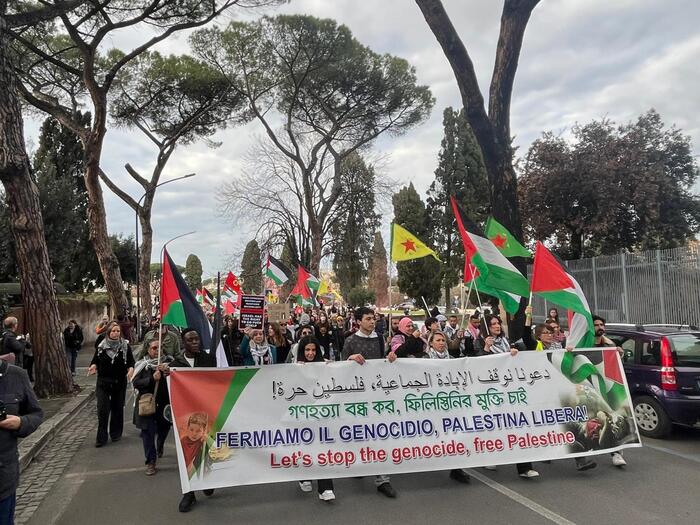NAP 38 is coming to an end, but according to experts, even strengthened structures will not collapse in a significant earthquake. Special investigation
An earthquake in eastern Turkey in 2011.
It can happen to us too
Photography:
Shatterstock
Produced by the Department of Special Supplements
A magnitude 7 earthquake and tsunami hit western Turkey this week.
The earthquake claimed lives and caused extensive destruction in Izmir, a port city with 3 million inhabitants, characterized by high-rise construction.
At least 20 buildings collapsed.
The memory of all of us is short: in the earthquake in the Goltsuk area of Turkey 21 years ago, entire cities were wiped out and thousands of people were killed.
From an engineering point of view, what happened in Turkey in 1999 happened in exactly the same way this week.
Nothing has been done to address the problem over the years, as almost nothing has been done here in Israel.
In the midst of the corona, who has our head to think about the risks of earthquakes?
But Israel is prone to real calamity in terms of casualties and also in the economic damage that will be caused.
Meanwhile, a sign was posted on many beaches in the country: "Caution, tsunami", in case of need.
According to all experts, a strong earthquake is expected in the State of Israel, which will hit the Dead Sea area and expose entire areas of the country to injuries, most of them in the central region.
The earthquakes that occurred in the past on Israeli soil occurred before the country was densely populated, and even then heavy damage was recorded.
The destruction nowadays is expected to be much more severe.
At any moment an earthquake of no less magnitude than that which occurred in Turkey may occur here.
History proves that once every 100 years it happens here as well, along the Syrian-African rift.
Tiberias, Safed, Beit She'an and Lod have been wiped out almost completely in the past.
A tsunami in Caesarea apparently sank the ancient Herodian port.
Many cities in the country are in danger of extinction, from Be'er Sheva and Eilat in the south, through Nesher and Haifa to all refining facilities, to Kiryat Shmona and Tiberias in the north.
The recent Home Front Command exercise presented a non-science fiction scenario: a magnitude 7.1 earthquake that killed thousands, displaced 150,000 civilians, national infrastructure and trapped people across the country.
The exercise was attended by 164 local authorities, various government ministries and vital enterprises.
Waiting for an earthquake
"According to existing knowledge in Israel and around the world, a strong earthquake will occur here, but it is not possible to know when and to what extent," writes Amir Yahav, director of the inter-ministerial steering committee for earthquake preparedness, in an official document.
"This puts the residents of Israel in real danger, which could threaten the way of life in the country, as we know it today, and take us back a generation."
According to Yahav, we cannot prevent the earthquake or the tsunami that may follow, but we have the power to reduce the damage.
This requires the construction of buildings that meet construction standards and taking preliminary actions for the event, during and immediately after the event, which will help us recover as quickly as possible, rehabilitate our lives and return the country to full function.
Does this really happen?
The answer is no, of course.
The Yom Kippur Agranat Committee or the Corona Committee look like a child's play compared to what is expected to happen.
Out of 650,000 buildings in Israel, there are about 80,000 residential buildings for which there is a risk of collapse due to a strong earthquake.
In Turkey, too, as in Israel, the administration, it seems, is engaged in self-politics to maintain power, and is not interested in investing in infrastructure for the benefit of future generations.
They have done nothing in Turkey, nor are we doing anything.
Old Middle East.
NAP 38 was born 15 years ago, as an engineering plan to reduce the state's risk in the event of an earthquake. It is not clear what the NAP's benefit is in protecting against earthquakes, but in the meantime the state has lost close to NIS 14 billion due to non-collection of praise tax.
The idea behind TMA 38 sounds logical on the face of it.
The Israeli Standard for Earthquake Resistance TI 413, which entered into force in 1975 and is binding from January 1980, does not apply to buildings built previously. It is estimated that most buildings built in Israel until 1980 do not meet the requirements of the standard. Fear that in the event of a strong earthquake many buildings will collapse and thousands of people will be killed.
The Corona has imposed the death penalty on quite a few small and medium-sized TMA companies that have run into difficulties.
Some went bankrupt and left tenants in exposed projects unanswered.
In TMA 38/1 projects to strengthen and add floors to the building, security and elevator for each apartment, the tenants remained in their homes and were not evacuated to alternative rental apartments.
In many cases the domestic closure has caused the pace of work by the contractors to slow down, at the request of the municipality or the tenants themselves, in order to reduce nuisances.
Senior engineer Israel David, who until recently served as acting chairman of the Standards Institute and deputy chairman of the Chamber of Engineers and Architects: "TMA 38 is a bluff, like Aridor's color TVs from the 1970s. When the corona threatens the stability of government, there are tens of billions of shekels "The main thing is for the citizens to be calm. But when it comes to strengthening earthquake structures, there is no money."
The danger is tangible.
About 3.3 million residents in Israel live in apartments without security. A survey conducted by the Builders of the Land Association of Contractors shows that Tel Aviv currently has about 150,000 apartments without security, which is about 73% of the apartments in the city.
In Ramat Gan, about 45,000 apartments without security, about 71%. In Givatayim, 76% of the apartments without security, and in Holon, 74%.
Prominent among the cities of Gush Dan Bat Yam, where 89% of the apartments lack a security guard, since construction in the city is mostly old.
Talking real estate with Ofer Petersburg. Listen to the new podcast >>
In Rishon Lezion, Petah Tikva and Rehovot, which have enjoyed a lot of construction in recent decades, the rate of dwellings without security is lower and ranges from 51% to 56%. In the cities of the Shefela and the south, the figures are not encouraging. In Dimona, 68% and in Yeruham 70% of the apartments were built without a security guard.
A program for the rich only
The Commissioner for Construction Regulations at the Ministry of the Interior has stated more than once that the ministry is disappointed with the failure of the national master plan for the protection of existing buildings from earthquakes (NAP 38/1), which was extended until October 2022. At NAP 38/1 for strengthening buildings It should be noted that there was not even a requirement for the addition of MMAD, in contrast to evacuation-construction projects.
Why does TMA 38 not provide a solution to the problem? Because it operates on the basis of economic viability, and no more. That is why it has become a bonanza for the able.
While in the peripheral cities that are in real danger, nothing was done, in the expensive land in Tel Aviv, Ramat Gan, Givatayim and Raanana, reinforcements were actually made, because there are those who will pay due to the high value of the land.
In April 2005, the plan was approved to protect 800,000 old apartments.
In practice, the buildings that can be turned into boutique buildings are protected, and they are also very limited.
Thus, the TMA became a benefit for the rich only.
How deprived is the periphery?
In the Tel Aviv and Gush Dan area, close to a quarter of the new dwellings built and purchased were within the framework of NPA 38: more than 5,000 dwellings, most of them in demolition and construction projects. In the entire central region, close to 10% of new dwellings are within NPA 38, and in the Haifa area More than 10%.
In Ramat Gan, more than 400 new buildings were built instead of old ones.
Raanana, along with Ramat Gan, is the pinnacle of TMA's projects in the last decade. More than 2,000 new apartments have been built in this framework, and hundreds of projects are in various stages of licensing.
Crime for tenants and the environment
To what extent can you trust what was done within the framework of the NPA? This is another question. Senior engineers believe that it is a patchwork quilt, and beyond the cosmetic renovation, the building will not withstand an earthquake.
A special delegation from the Ministry of Construction and Housing, led by the firm's architect, Vered Solomon Maman, flew to Japan to learn from what was happening there.
"The existing knowledge in Israel regarding the strengthening of existing structures against earthquakes is not sufficiently developed, and the government should take this into account," said Solomon Maman.
According to her, the reasons are that the reinforcement methods used in the projects have not been tested, and professionals engaged in the craft are not skilled enough.
In August this year, rescue and rescue forces were called to the building on Hanna Szenes Street in Rishon Lezion, after a floor collapsed on the first floor of a building that was undergoing reinforcement (NAP 38-1). Three wounded were taken to Assaf Harofeh Hospital.
A hazardous structural engineer approved the rest of the occupants to return to the building.
The mayor arrived at the scene: "We will check if there were approvals and clear a commission of inquiry into the case," he declared.
80,000 housing units in various stages of TMA 38 are to be realized in the next two years by the end of TMA 38/1. So has the TMA been completed, as we often ask? The answer is not really. In Ramla and Givatayim, for example, plans were recently submitted LOTAL for thousands of units, including buildings marked as reinforcements in NAP 38 and not expected to be abolished. Like them, there are many thousands more in other places.
"There are indeed some places where the NAP is effective," confirms Haim Avitan, chairman of the Urban Renewal Authority. According to him, a call came out for the authorities who are interested in funding master plans for urban renewal, and there is a great response. "We review these plans before funding. "There is no economic feasibility in them, we are not financing. This ensures that we will see more renewal in the coming years, also in the style of the TMA," he said.
This means that it is not worth rushing to bury the plan, especially when political voices are heard to revive it, including from members of the Blue and White faction before the last election.
According to the latest report by Dun & Brestreet, there are 1,500 entrepreneurs building 1,800 urban renewal projects, with 450 contractors, with a financial volume of NIS 20 billion.
According to Daniela Posek, chair of the Tel Aviv District Committee, close to 70% of the approved apartments in the Central District are in urban renewal. In the periphery, where reinforcement is especially needed, there are zero reinforcements.
Engineer Israel David repeatedly warns as a prophet at the gate.
"The contribution to risk reduction is zero. Both because the dangerous areas along the Syrian-African rift are not economically viable for the implementation of the NAP, and also because the plan places enormous limits on urban renewal.
"Instead of seeing a general picture, build additions like in the pavilions in Brazil. Take a rotten building, wrap it with some concrete and build floors above it. The decay inside the building is not solved. The TMA has become a gold mine for those who want to cut a quick coupon without any public benefit."
On the case in which three women in Rishon Lezion were injured by a floor collapse, he says: "This is even before the earthquake. There are many cases of buildings collapsing while working on the NAP.
When there are no injuries or damage to human life it does not reach the media.
TMA 38 is a crime against the tenants and the environment.
The planning director decided to cancel it, but pressure from political activists caused Kahlon to postpone the cancellation for two years.
Now I hear that the activists are sitting on Minister Deri to persuade him to continue. "
Uriel Peretz, director of housing at Poren Sharim, who in his military training serves as a rescue engineer trapped from destruction sites in the Air Force, is also skeptical.
“Many argue that NAP 38 is not the solution, for fear that the fortified buildings will not withstand an earthquake.
I believe that evacuation-construction projects should be significantly promoted, in which the buildings are completely demolished and rebuilt.
There is an urgent need to address urban renewal in the periphery, in those areas prone to disaster. "
An alternative to renewal is needed
The date set for the abolition of the NPA, October 2022, is still seemingly far away, but in terms of planning and licensing it is a very short time, especially since the Corona has added to the market stagnation. A race to sign tenants and close projects, only to get to the table of the planning committees, which will collapse under the load.
Today we are actually witnessing the withdrawal of the authorities from the NPA, for example the Ramat Gan municipality, in which the number of projects has dropped by tens of percent in the past year. The Haifa municipality recently announced that it is cutting back on NPA rights.
The Tel Aviv Municipality also decided to limit the addition of areas to existing apartments to only 12 square meters. Hod Hasharon presented an urban renewal plan with a multiplier of 2.7, whose economic applicability is questionable.
Thousands of projects are currently in the early stages of tenant signings or initial planning.
These are tens of thousands of apartments that are in danger, and it is worth finding an alternative to their renewal.
Local authorities will promote such programs, if they can charge an improvement levy, but it will burden costs on the projects and they will not be economic, all the more so in the periphery.
The developers also feel the sense of end of NAP 38. Niv Rom, Canaan CEO of Urban Renewal and owner of the Canaan Group: "There are significant cases in which the implementation of the NAP 38 project is preferable to evacuation-construction. In these cases, the cancellation of the NPA. "May be detrimental both at the micro level of the rights holders, whose realization of rights will be significantly delayed, and at the macro level of the national interest, since the strengthening of the dangerous structures will be delayed or eliminated."
According to the decision of the National Council, the NAP 38 plan is expected to remain in force until October 2022, and due to the corona there may be further extensions. Transitional provisions will be established so that applications for permits opened by a certain date will be included in the NPA.
After that date no further applications will be submitted.
In two years, TMA 38 will in fact be transformed from a national plan into a master plan, that is, it will move to the local level, in order to plan urban complexes and enjoy tax collection.
"Surprisingly, the direct effect of the abolition of the NPA will be in the field of taxation and not in the field of planning," explains Adv. Keren Freshkar of Raz-Cohen, Freshkar & Co.
"There are currently a lot of plans approved by the NPA, such as the district plan in Tel Aviv.
These plans stipulate the addition of construction within the framework of the reinforcement stipulated in the NPA, and most of them will remain in force even after the NPA expires.
"It seems that it will be possible to continue to obtain building permits on the basis of the same plans. However, the provisions of the exemption from praise tax and improvement levy depend on the existence of the NPA, and these will not apply if it expires.
The dramatic change in taxation could drain entire projects. "
Produced by the Department of Special Supplements














